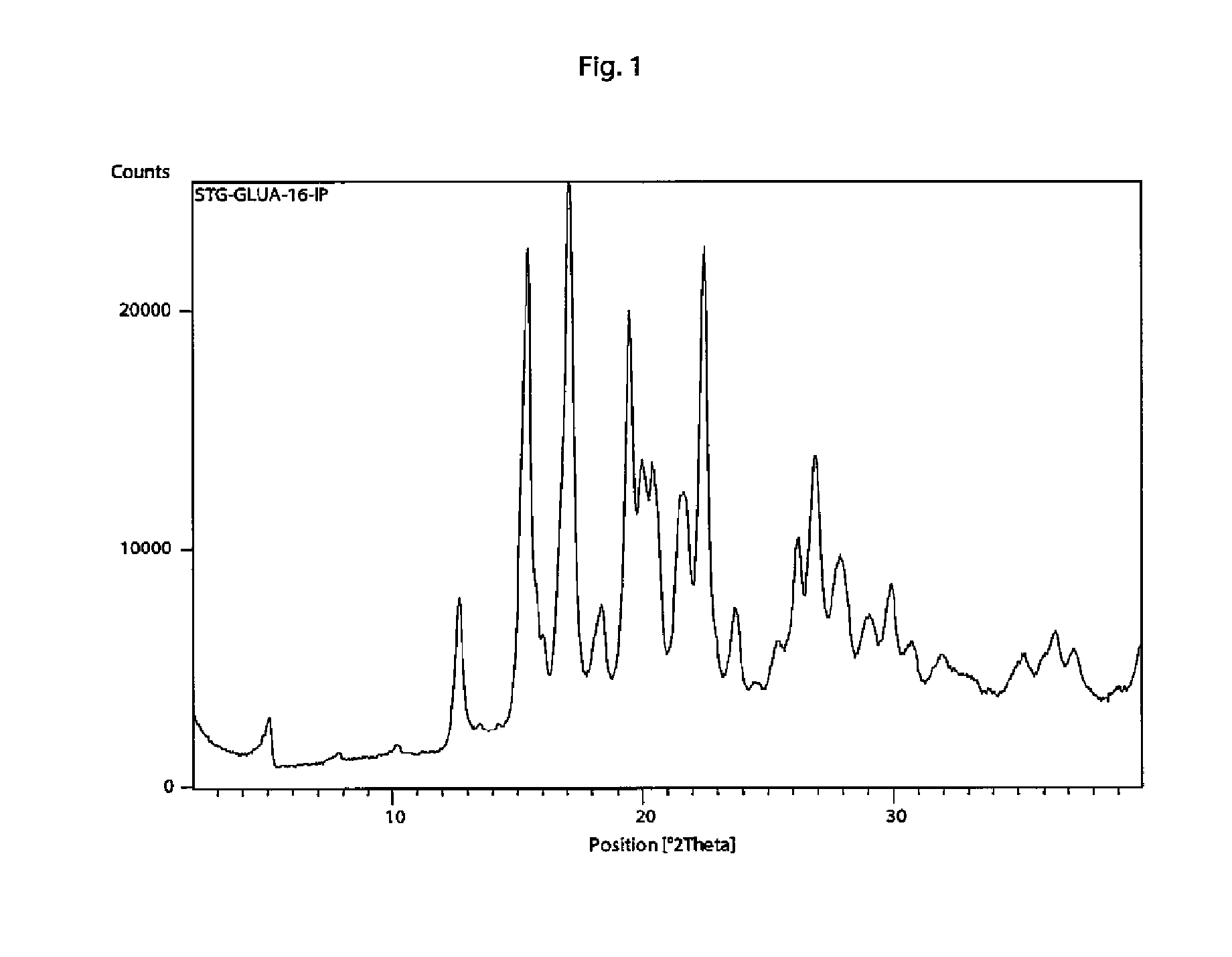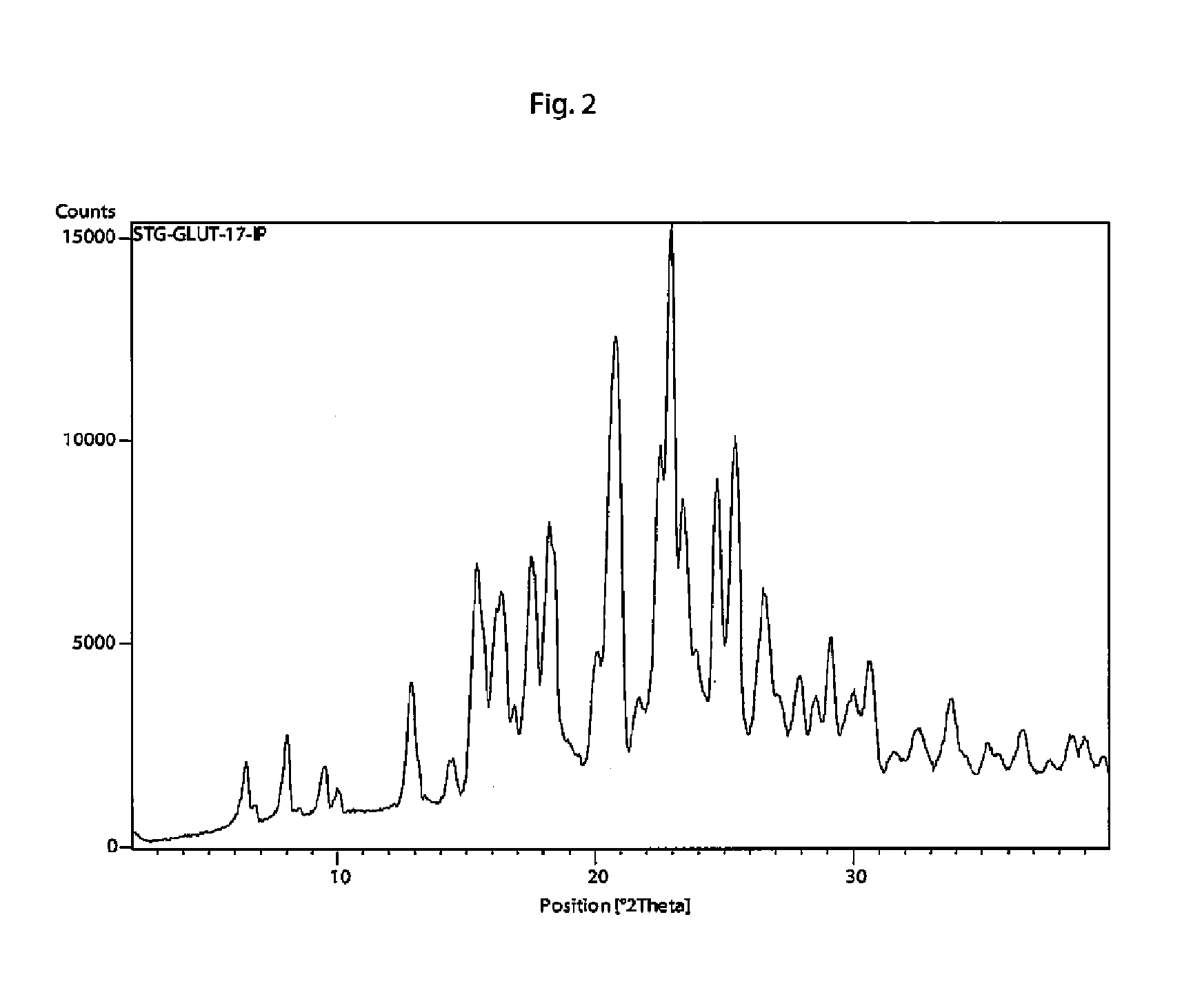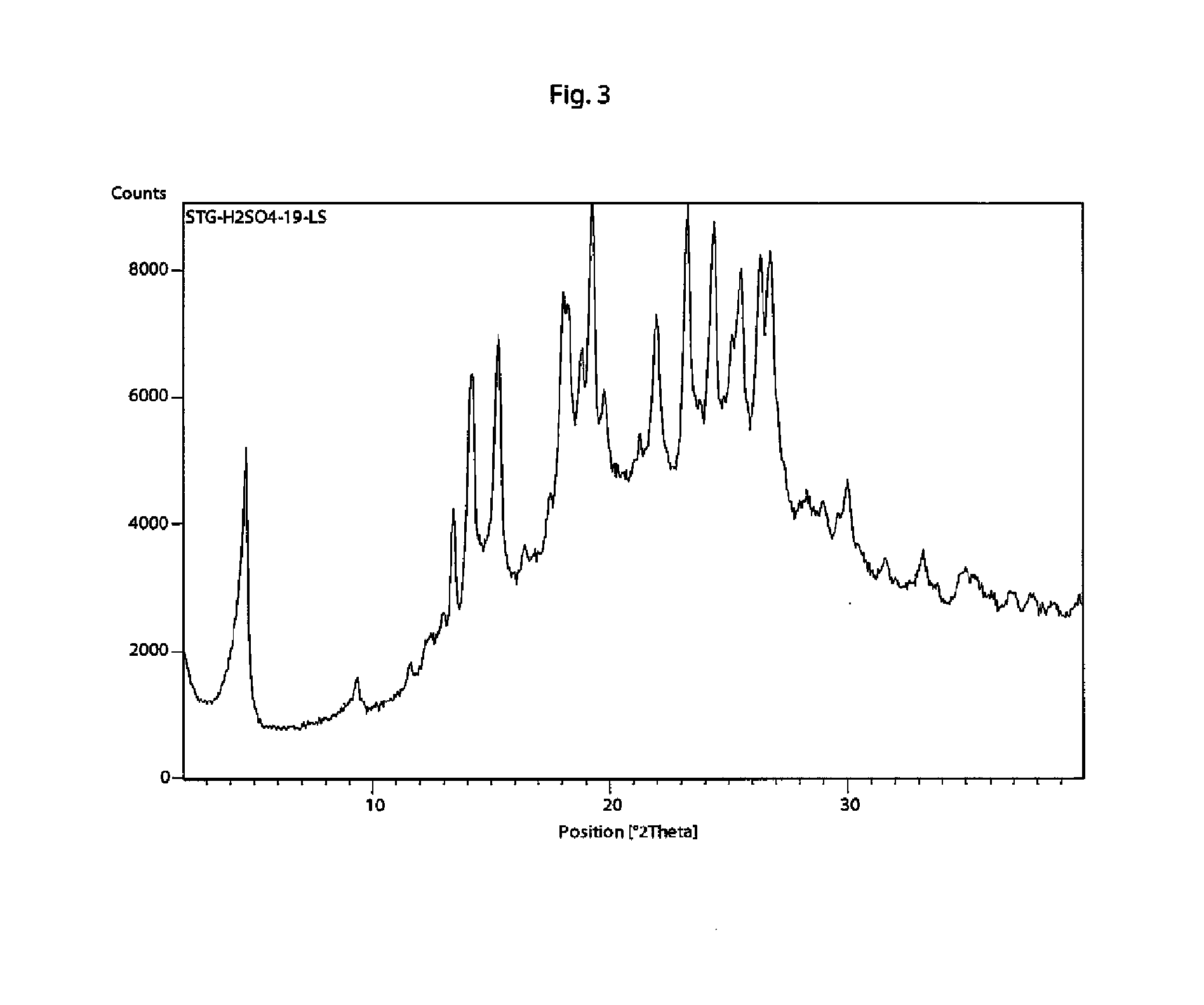Novel salts of sitagliptin
a technology of sitagliptin and sitagliptin, which is applied in the field of new pharmaceutically acceptable salts of sitagliptin, can solve the problems of inability to predict the existence and properties of individual salts, irregular bio-behaviour, and inability of skilled people to predict, so as to achieve good overall characteristics, high thermal stability, and good water solubility
- Summary
- Abstract
- Description
- Claims
- Application Information
AI Technical Summary
Benefits of technology
Problems solved by technology
Method used
Image
Examples
example 1
[0118]In a 100 ml flask sitagliptin free base (1.20 g) and D-glucuronic acid (604 mg) were dissolved in methanol (8 ml) and water (3 ml) under stirring. When homogenous solution formed, iPrOH (isopropyl alcohol) (50 ml) was slowly added under stirring at room temperature. White precipitate formed and dispersion was left to stir for 12 hours at room temperature. Formed crystals where collected using suction filtration through a porous ceramic filter and washed with 10 ml of iPrOH to yield a white powder (1.64 g, 92%). Melting point 126-129° C.
example 2
Sitagliptin Glutarate
[0119]In a 50 ml flask sitagliptin free base (1.01 g) was dissolved in acetonitrile (10 ml). Then solution of glutaric acid (344 mg) in acetonitrile (7 ml) was added dropwise under stirring. After addition, precipitation appeared together with a gummy residue. Mixture was then heated to reflux temperature until clear solution formed and left to cool slowly to room temperature under stirring with addition of crystallization seeds. Formed crystals where collected using suction filtration through a porous ceramic filter to yield a white powder (1.20 g, 90%). Melting point 112-118° C.
[0120]Crystallization seeds used in Example 2 were prepared by dissolving sitagliptin free base (1.01 g) in acetonitrile (10 ml), adding dropwise glutaric acid (344 mg) in acetonitrile (7 ml) under stirring and subsequently evaporating the solvent.
example 3
Sitagliptin Hydrogensulfate
[0121]In a 50 ml flask sitagliptin free base (505 mg) was dissolved in acetonitrile (10 ml). To this solution a solution of H2SO4 (66.4 μl, concentration=95-97%) in acetonitrile (5 ml) was added drop wise and left to stir over 2 hours. After unsuccessful trial of filtration solution was evaporated to dryness and formed solid dispersed in methyl tert-butyl ether (tBuOMe) (50 ml) under stirring at room temperature for 2 hours. Formed dispersion was filtered through a porous ceramic filter and white crystals where collected (592 mg, 95%). Melting point 184-190° C.
PUM
| Property | Measurement | Unit |
|---|---|---|
| temperature | aaaaa | aaaaa |
| temperature | aaaaa | aaaaa |
| temperature | aaaaa | aaaaa |
Abstract
Description
Claims
Application Information
 Login to View More
Login to View More - R&D
- Intellectual Property
- Life Sciences
- Materials
- Tech Scout
- Unparalleled Data Quality
- Higher Quality Content
- 60% Fewer Hallucinations
Browse by: Latest US Patents, China's latest patents, Technical Efficacy Thesaurus, Application Domain, Technology Topic, Popular Technical Reports.
© 2025 PatSnap. All rights reserved.Legal|Privacy policy|Modern Slavery Act Transparency Statement|Sitemap|About US| Contact US: help@patsnap.com



